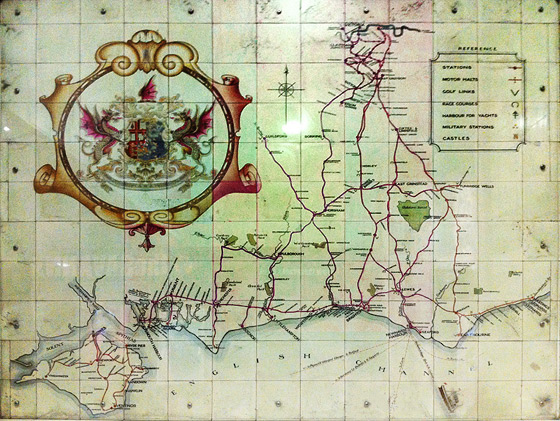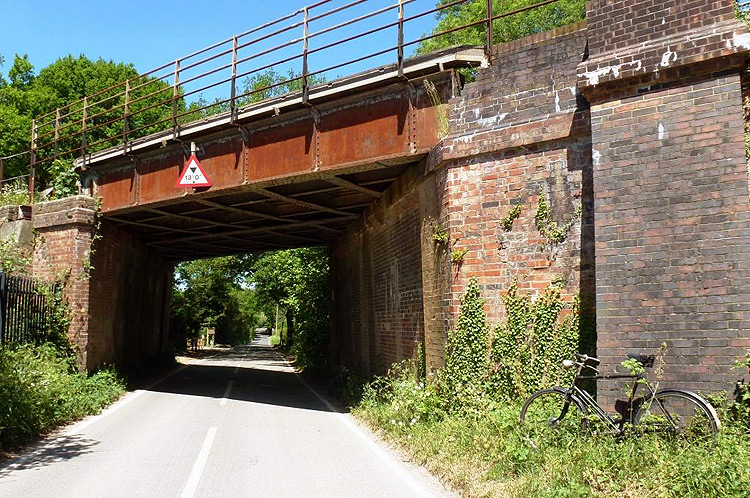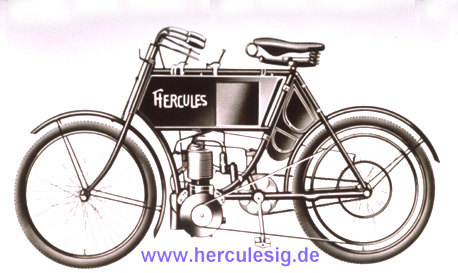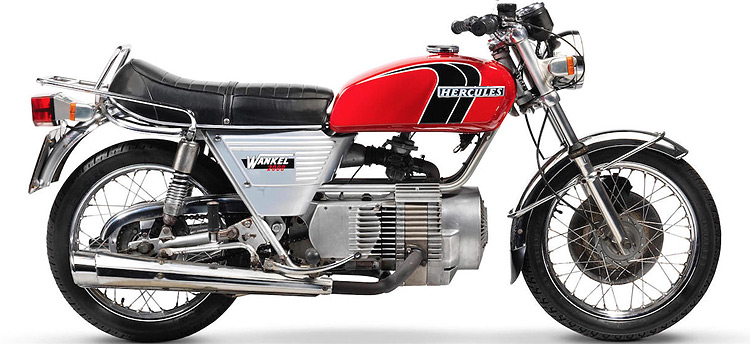|
Flaming June ! The coronavirus lock-down continues and the ban on public
meetings is still in force. Still not able to carry out the normal range of
Surrey Vintage Vehicle Society outside and inside gatherings. We have therefore encouraged all
our members to take
photographs instead of any of their allowable distancing machinery and share them on
our website. Many of our
Members are of the 'elderly variety' so were hunkered deep down thinking of
survival rather than escape, but some have been 'socially cycling' and
have sent photos to
us. PHOTOS WELCOME !!
Our Membership Secretary Chas Moody
apart from being keen vintage car owner is also a very keen 'two-wheels man'. As
well as having a 1914 Triumph TT
Roadster Motorcycle ( Virtual 81st Pioneer Motorcycle Run - 2020
) he is also a regular 'modern' sports biker, and he has a much broken leg to prove it,
- he is also a collector of old bicycles. A number of his cycling adventures
during the Corona Lockdown have already been covered in these pages.
Chas is also a convert to photography and has now sent some lovely photos to
prove it. This cycle ride he describes as a "Bridge too Far" and he
says this could well be of more interest to railway enthusiasts than cyclists!
"Here in Hurst Green we have good rail links to London via Oxted to the
north, and southwards down to Uckfield and East Grinstead. The lanes in the
area, which are ideal for cycling, are criss-crossed by rail lines running
through tunnels and cuttings and over bridges and viaducts necessary to deal
with the gradients and valleys. The focus of attention today is the highly
unusual 'Little Browns Tunnel' (No.56), which is actually two tunnels
 
First a brief history of the rail lines! The building of the rail line from
Croydon to Oxted and down to East Grinstead was beset with problems but was
finally opened by the London Brighton & South Coast Railway (LB&SCR) in
1884. Then in 1888 a further branch line down to Uckfield was completed, the two
lines dividing just south of Hurst Green station. The first railway in the area
however, was the Redhill to Tonbridge line running east-west, opened in 1842 by
South Eastern Railway. LB&SCR was absorbed in 1923 into the Southern
Railway, which became the Southern Region of British Railways on nationaisation
in 1948. This then became the Southern Railway again after privatisation in
1996. Map above survives at the entrance to Victoria Station terminal in London.


 Please
Click on the thumbnail photos to see the FULL SIZE picture Please
Click on the thumbnail photos to see the FULL SIZE picture
The ride out passes through Staffhurst Wood then over the Tonbridge line at
Black Robin Bridge (No.54), named after Black Robin's Farm. Crossing the border
from Surrey to Kent, we arrive at Little Browns Lane and the tunnel bearing its
name. The unusual feature is that the Tonbridge railway line passes under
Hilders Lane in a cutting which was built in 1841 and when the Uckfield line was
built at a later date, it had to be run underneath the Tonbridge line in
tunnels, north and south of the Tonbridge line, so the roof of the Uckfield
tunnel forms a bridge for the Tonbridge line where the two lines cross at right
angles. Quite an engineering feat. The picture, looking east towards Tonbridge,
should explain everything!


Continuing east along Little Browns lane then south along Crouch House Road we
meet the Uckfield line again, this time passing over the road by means of Crouch
Lane Bridge (No.533). On the return journey we re-cross Black Robin Bridge then
continue north along Grants Lane, crossing over the Uckfield line at Grants Lane
Bridge (No.527). Nearly home, we turn into Holland Lane which passes over the
Uckfield Line (Bridge No.525) then crosses the East Grinstead line (Bridge
No.844).
 Please
Click on the thumbnail photos to see the FULL SIZE picture Please
Click on the thumbnail photos to see the FULL SIZE picture


Today's bike is a 1956 Hercules 'Artisan' cycle which were mass produced in
Birmingham. The Hercules Cycle and Motor Company Limited was founded in 1910 by
Edmund and Harry Crane. The name Hercules, the hero and god of Roman mythology,
was chosen for its associations with durability and robustness. Trading on low
price and high quality, Hercules cycles were some of the cheapest on the market
and by the end of the 1930's Hercules had produced over six million cycles and
could claim to be the largest manufacturer of bicycles in the world.


In 1946 the company was sold to Tube Investments (later known as TI Group) who
also acquired Raleigh in 1960 but sales declined and by 1963 there was little
left of the distinctive Hercules marque. In 2003 the original company, which was
still part of Raleigh, was dissolved. This bicycle is a standard 'ride to work'
machine of the type that provided economical, reliable transport for millions of
workers between the Wars and up to the 1950's when low priced family cars began
to be afforded by the average worker.
 Please
Click on the thumbnail photos to see the FULL SIZE picture Please
Click on the thumbnail photos to see the FULL SIZE picture


Whilst this humble machine would hardly raise the pulse of any cycling
enthusiast (except if they rode it for any distance!), it rightly deserves its
place in both social and transport history.


 Please
Click on the thumbnail photos to see the FULL SIZE picture Please
Click on the thumbnail photos to see the FULL SIZE picture
The Hercules bicycle is of great significance to Chairman
Bozi Mohacek, as this was his very first bicycle in
England. " Back home in Croatia I had a number of children's bikes of
various impressive appearances because in the very late 1940s I lived with my
Grandparents who lived very close to a cyclebuilder who specialised in exotic
looking machinery. However when I came to England I was sent to a boarding
school where bikes were not allowed. So it was not until about 1956, when my
mother came to the UK that I had a 'home base' where a bicycle could be kept.
However, in her attempting to make me grow up self-sufficient, I had to buy the
bike myself ; not that easy at the age of 13. 'Home base' was a rented flat very
close to the beach in Hove in Sussex, very near the famous boating' Lagoon'.
Lots of affluentish houses all needing their morning newspaper, - and guess who
was delivering them! Yes, I was allowed a bicycle as long as I got a holiday
paper round to pay for it, morning and evening.
 
I have vague recollections about parental/newsagent discussions relating to my
age, and limited English. I remember a local cycling competition being involved,
and my ownership of the bike was dependant on it. Anyway, got my bag and did the
rounds. I thought I had no photos left of this episode of my life but lots of
searching through obscure places came up with the photo above and the two photos
below. All are enlargements of very tiny 'brownie' type photos, I guess Christmas 1956 may have played a part in the saga because two of
the pictures feature snow! The lady above was my mother. (In the background was
a Jaguar dealership where I faithfully promised myself an XK140. Never did get
one, but did manage some equally faster ones since!)


 Please
Click on the thumbnail photos to see the FULL SIZE picture Please
Click on the thumbnail photos to see the FULL SIZE picture
I had completely forgotten about the bike until the mention in the
above article by Chas of the HERCULES. I remember the name extremely well
because the pronunciations of it in English and Croatian were quite different. I
guess the bike was probably not new but second-hand, but it was gleaming, - and
kept so by me. I cannot remember if it was a full size bike, because I wasn't,
but I do remember that it was a smidgen too big for me. It would have been quite
basic due to my limited earning capability. I remember it had an ' H ' on the
badge.
Chas Moody had mentioned in his article that the Hercules bicycle was
manufactured in Birmingham. This is a bit of a problem because I seem to have a
strong recollection that my bike had something to do with Germany ? So a bit of research was needed.
And it seems that there were indeed two bicycle companies in Europe called
Hercules. One was indeed in Birmingham and the other was indeed in Nurnberg,
Germany. So a bit of investigation need as to when these were making
bicycles.
The (British) Hercules Cycle and Motor Company Limited was founded around the
purchase of the Petros Cycle Company but several bankruptcies later was
registered as Hercules in 1910 in Aston, Birmingham.
Initially they made 25 bicycles a week subsequently growing due relatively
high quality machines being sold for a low price. A couple of relocations to new premises
saw them making 10,000 a year by
1914. In World War 1 they mass produced shells. By 1923 they were making
1,000 cycles a day, each taking less than 10 minutes to assemble. In 1928 they
exported one in five of all British cycles and, by 1935, 40 per cent. The
company made its six millionth bicycle in February 1939 and claimed to be the
biggest manufacturer in the world. They became one of the largest companies in
Aston and Aston Villa mascot is Hercules the Lion. In 1946 the company was sold
to Tube Investments and by 1956 was absorbed with other cycle manufacturers into
the British Cycle Corporation. This seems to have coincided with major redundancies
following deadlock with unions. TI then bought Raleigh in 1960 forming TI
Raleigh Industries and management of British Cycle Corporation was given to
Raleigh. By 1963 there was little left of a distinctive Hercules, which was
closed down eventually as recently as 2003. Hercules name remains as part of TI
Cycles of India. Chas' above article features a number of quite detailed
Hercules photos.
The (German) Hercules Fahrrad Werke, Nurnberg started in 1889 as Carl Marschuts
& Co, employing 70 people and producing 800 bicycles; by 1894 there were 170
employees making 4,700 bicycles. By 1900, however, over-production created
difficulties and American imports compounded the problem. Like many other
companies they diversified into also making motorcycles. In 1903 they changed
the name to Hercules Werke AG mainly making a motorcycle with
engine hung on a bicycle frame. Direct drive to rear wheel via belt, and then continued with motorcycles with small capacity engines. They made various
commercial vehicles between 1905 and 1928. In 1932, when tax reductions made
3-wheeler cars profitable, they brought out the two-seater Hercules Coupe
powered by a 200cc engine. It was only in production for one year.



 Please
Click on the photos to see larger picture Please
Click on the photos to see larger picture
Bicycle production continued as a subsidiary activity and sold well, being a
well built reliable machine. There does not seem to be much info available about
Hercules after WW2 when their works were destroyed. They recommenced activities
by repairing bicycles but 'war reparations' took all their machinery.
Information suggests they were still being made in the 1950s and 1960s by the
Nurnberger Hercules Werke GMBH. These were both the older fashioned sit-up-beg
and the more sporty version with dropped bars.- But it is the motorbikes and
mopeds they became known for and that is mostly what comes up in any Hercules
Germany searches..
So this has not bought me any further in clarifying why I should have thought my
bike was German. Only thing that I noted in my searches was that the front brake
rod on the later period German bike went through the mudguard to a rubber pad
that pressed into the tyre. Mine definitely seems to have rim brakes. British
Hercules seemed to have the letter H incorporated into the main sprocket and a
more comprehensive chain guard. I found a site that was comparing a 1939 German
to 1949 British machine saying that the British was more lively and nippy,
whereas the German one was strong and built as for war (?!). Not much
detail can be pulled out of my photos to say either way but all my studies, despite
my recollections, seemed to be suggesting that it was a British Hercules.
 
 Geran
Hercules left Geran
Hercules left British
Hercules right British
Hercules right
So I finally turned to our 'Bike Guru' Chas Moody, who has a British Hercules,
to see if he can recognise any details in my photos to pinpoint the country of
origin. The badge? He replied that he also could not find when the German
Hercules ceased to be made but attached a photo of the badge on his Hercules and
the shape looks similar to the one on my bike, plus it has a large 'H' as I had
recalled it having. It also has similar chrome shrouds over the 'shoulders' of
the front forks.
 
 Geran
Hercules left Geran
Hercules left British
Hercules right British
Hercules right
 Please
Click on the photos to see larger picture Please
Click on the photos to see larger picture
Regretfully my montage of the badges above shows both had an 'H' on it and both
had chrome shoulders. However, the badge was definitely much more British
shape than German. The German Hercules generally had the stylized zeppelin mascot on the front of
the front mudguard, and also the front brake going through the mudguard was
specifically on the German bike. So Chas and I both now seem to agree that my
Hercules was the British make and made about the same time as the one that Chas
has, about 1956? - So where the blazes does Germany come in?? Sadly nobody
about anymore who could solve the puzzle.

Go to Recent Venues
Page
PICTURE GALLERY INDEX
|






















